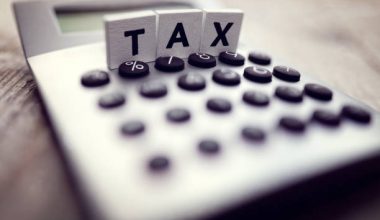Congratulations on your newest achievement – graduating. You have scaled through the numerous classes, lectures, assignments, tests, and exams, and even powered through the projects, and now, you hold or look forward to holding your hard-earned degree. But what exactly are you looking at? What does a degree certificate look like?
Usually, there are always numerous talks about diplomas and degrees, and you might have wondered: how can one tell if a degree certificate is real or fake?
Well, you won’t be the first to ask. We’ve come across questions like this a lot with answers leaving you still wondering or unsure about your certificate. So that’s why we’ve taken the time to find out the top 7 ways you can spot a fake degree certificate.
Table of contents
- What Is A Degree Certificate?
- What Information Is Typically Found On A Degree Certificate?
- What Does A Degree Certificate Look Like?
- 7 Ways To Spot A Fake Degree Certificate
- Is It Possible To Verify The Authenticity Of A Degree Certificate Online?
- FAQs – Ways To Spot A Fake Degree Certificate
- Conclusion
- References
- We Also Recommend
What Is A Degree Certificate?
A degree certificate is an official document issued by an educational institution, such as a university or college, to a student upon successful completion of a degree program. It serves as proof that the recipient has earned a specific academic degree.
With a degree certificate, students can choose a specific career path. Completing a degree also requires students to take generalized classes in addition to their chosen major, which may include courses like mathematics or science.
Some students may choose to further their education with a graduate degree, either a master’s or a Ph.D.
Read: How Many Degrees Can You Get?
What Information Is Typically Found On A Degree Certificate?
A degree certificate usually includes the recipient’s name, the degree title, date of award, signatures of authorized officials, the institution’s logo or seal, and sometimes additional details about the recipient’s academic program or major.
There are graduate and undergraduate degrees and this information is almost the same for both.
See: Are Language Degrees Worth Studying at University?
What Does A Degree Certificate Look Like?
Degree certificates’ designs vary from each university. The layouts, fonts, and papers used are different. In certain schools, the degree certificates may still have differences depending on the academic year they were released. On the other hand, their contents are almost similar.
A degree certificate usually includes the campus’s name, logo, and address at the center top of the certificate. It also has the recipient’s full name along with his completed degree program. Below you will find the certification dates, along with the signature of the school head or other authorities in charge.
Most degree certificates have school seals that signify the authentication of the certificate. You may find images of degree certificates online. However, it would be safer to ask for samples from your school since several images on the internet are not authenticated.
READ ALSO: What is a Certified Statement of Results? Learn How to Get a Replacement Exam Certificate
7 Ways To Spot A Fake Degree Certificate
Spotting a fake degree certificate can be challenging, as forgers can be quite sophisticated in their efforts. However, there are several ways to help you identify potential signs of a fake degree certificate:
1. Certificate design
Fraudsters often believe that an ornate, Gothic typeface denotes prestige and tradition, and many of the fake certificates we have encountered use this technique.
In the real university world, this sort of typographical representation became outdated at around the same time as single-gender common rooms and rustication.
By and large, most contemporary fake certificates are modeled on their real-world counterparts. However, there are still many old-school fake certificates in circulation, such as this piece of calligraphy from Canterbury University.
SEE ALSO: QIDP Certification | How to Get it Fast
2. Look out for spelling and grammar errors
Pay attention to the text on the certificate. Genuine degree certificates typically have accurate spelling and proper grammar. Errors or inconsistencies may be a red flag.
Using Latin terminology on a degree certificate should also be a warning sign. Expressions such as ‘cum Laude are popular with US universities, whereas UK higher education institutions (HEIs) use ‘with honors’.
It has not been practice for UK providers to issue degree certificates in Latin for at least 10 years. Contemporary certificates are in English. Latin versions are occasionally issued as souvenirs but are supplementary to the English version.
3. Check for Watermarks and Security Features
Genuine certificates often have security features like watermarks, holograms, or embossed seals. Tilt the certificate to see if any security features become visible.
If in doubt, double-check the university’s website with the emblem on the certificate. Always request to view the genuine certificate rather than a duplicate.
Of course, checking the legitimacy of the certificate with the institution that issued it is the only surefire way to avoid getting duped by a false certificate.
You may want to see the 15 Best Community Schools in England | List
4. University location
Fake university websites usually provide contact information, including a postal address. It’s a feature that, if excluded, wouldn’t go unnoticed.
Any doubts about the legitimacy of a dubious-looking university site can be allayed instantly by putting the postcode into StreetView.
It certainly isn’t the ivy-clad, mullion-windowed establishment the certificate promised. Some fake universities are in serviced offices, car parks, and even on traffic roundabouts.
Before you even reach the StreetView stage, inconsistencies or insufficiencies in the address may give the game away. A PO Box or mailing house address, for example, is unlikely to be used by a real university.
5. Contact the Institution
Reach out to the institution directly to verify the degree and the recipient’s graduation. Use official contact information from the institution’s website rather than relying on contact details provided on the certificate.
READ ALSO: Certified Student Loans vs Uncertified Private Student Loan | All You Need to know
6. Check for Graduation Date
Ensure that the graduation date aligns with the expected time frame for the specific degree program. Unusually short completion times may raise suspicion.
7. University authentication
The UK has a large and diverse higher education sector and, even within the UK, recruiters don’t necessarily know their Queen Marys from their Queen Margarets.
Mergers, name changes, and rebranding have been the norm in the HE sector since the evolution of polytechnics into universities after 1992. For example, the University of North London merged with London Guildhall University (formerly the City of London Polytechnic) in 2002, to form London Metropolitan University.
Hedd’s university authentication database provides a family tree for all degree-awarding bodies. For example, from the site: ‘Bell College of Technology was a UK government-recognised body that gave awards between 1972 and 2007. Its qualifications are verified by the University of the West of Scotland.’
Also, see: Is an Open University Degree Valid for Employment?
Is It Possible To Verify The Authenticity Of A Degree Certificate Online?
Some institutions and employers offer online verification services to confirm the authenticity of degree certificates. You may need to provide certain information from the certificate to use this service.
There isn’t a one-stop online shop for verifying the authenticity of all degree certificates all over the world, but there are ways you can check online.
First, you may contact the issuing institution to confirm. This is usually the most reliable source to go with. Universities usually have sections on their websites where they allow for degree verification. Well, if you can’t find this on your institution’s website, you may contact your school directly to inquire what other ways you can.
Secondly, you can go with verification services. These are usually government-run or operated by professional organizations, and it is something you can do from the comfort of your home.
FAQs – Ways To Spot A Fake Degree Certificate
If you discover an error on your degree certificate, contact your institution’s registrar’s office or academic services department to request a correction or replacement certificate.
Yes, electronic degree certificates, often referred to as e-certificates or digital certificates, are becoming increasingly valid and accepted. They are typically issued with digital signatures and secure verification methods.
Scanned or photocopies of degree certificates are generally not considered valid for official purposes. Official documents typically require the presentation of an original or certified copy of the certificate.
Yes, degree certificates come in different sizes and orientations. However, a common size is letter-sized (8.5 x 11 inches), and they can be in landscape or portrait orientation.
Conclusion
Spotting a fake degree certificate can be challenging, especially if forgers have gone to great lengths to make their documents appear genuine. It’s essential to exercise due diligence when dealing with educational credentials, especially in professional or academic contexts. When in doubt, contact the issuing institution or consult with experts in document verification.
References
- luminate.prospects.ac.uk – ways to spot a fake degree certificate
- accredile.com – Academic Certificates vs Digital Certificates
We Also Recommend
- What is a Single Honours Degree? Meaning, Pros and Cons, Courses
- Do Employers Check Degrees UK? Everything You Need to Know about Qualification Checks
- How to Get a Degree Without Going to University
- Joint Honours vs Single Honours Degree: Is a Joint Honours Degree Better Than a Standard Degree?
- Is Medicine Career a STEM Degree?






